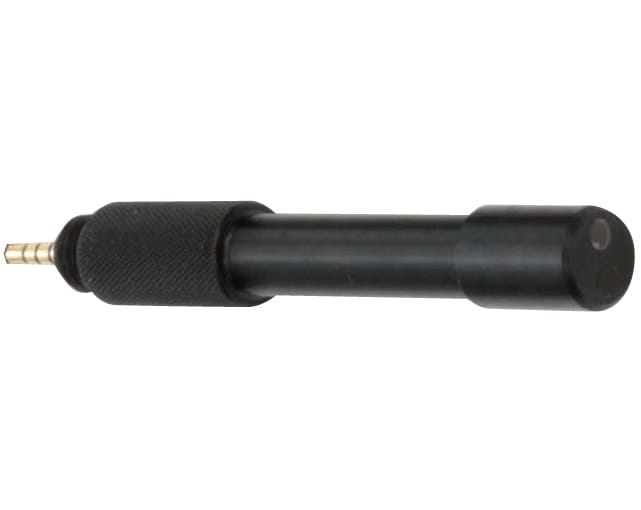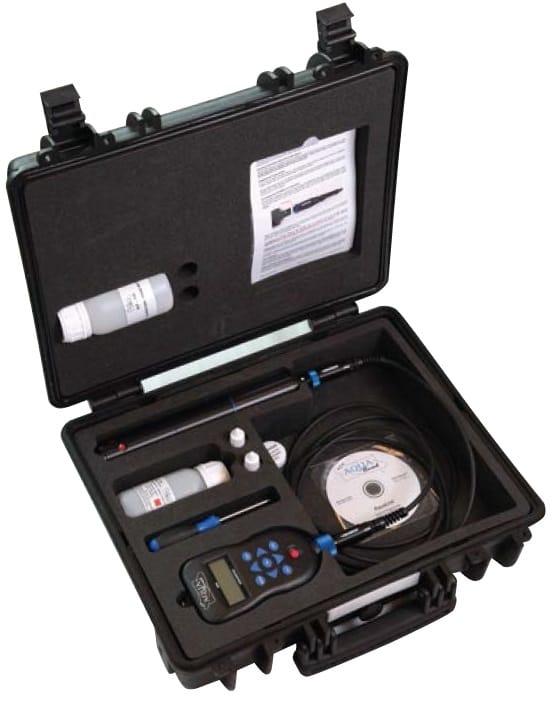Description
Phycocyanin (PC) is a blue-green pigment found specifically in cyanobacteria, commonly known as blue-green algae. Unlike chlorophyll, which is present in all photosynthesizing organisms, phycocyanin acts as a highly specific indicator for the presence and abundance of these particular types of algae in water bodies.
Why is Phycocyanin Monitoring Important?
Monitoring phycocyanin levels is critically important for water quality management due to the potential risks associated with cyanobacteria:
- Harmful Algal Blooms (HABs) Indicator: High levels of phycocyanin are a direct and specific indicator of a cyanobacterial bloom. Many species of cyanobacteria can produce cyanotoxins, which are harmful to humans, pets, and wildlife.
- Public Health Risk: Cyanotoxins can cause a range of health issues, including skin irritation, gastrointestinal problems, liver damage, and neurological effects. Monitoring phycocyanin helps water managers protect public health in recreational waters and drinking water sources.
- Early Warning System: Because phycocyanin is unique to cyanobacteria, its detection provides an early and specific warning of a potentially toxic bloom before it becomes visually apparent or widespread.
- Ecosystem Impact: Like other large algal blooms, cyanobacterial blooms can reduce water clarity, deplete dissolved oxygen (DO) as they decay, and negatively impact the overall aquatic ecosystem.
- Taste and Odour Issues: Cyanobacteria are a common cause of unpleasant earthy or musty tastes and odours in drinking water, even at low concentrations. Phycocyanin monitoring can help anticipate and manage these aesthetic issues.
- Management Strategies: Specific phycocyanin data allows for targeted management strategies to control cyanobacterial growth, rather than general algal control measures.
How the Phycocyanin sensor works
A phycocyanin sensor accurately quantifies the presence of this pigment based on its unique fluorescence properties. The sensor operates by emitting a specific wavelength of light, typically in the orange-red spectrum (e.g., around 590nm or 620nm), into the water sample. This particular light excites the phycocyanin pigment found exclusively within cyanobacteria. The excited phycocyanin molecules then fluoresce, re-emitting light at a distinct, longer wavelength (e.g., greater than 650nm or 660nm). A sensitive detector precisely measures the intensity of this emitted fluorescence, with the intensity being directly proportional to the amount of phycocyanin present, thereby providing a real-time measurement of cyanobacterial biomass.
The Aquaread Phycocyanin sensor, for use with the AP-2000 probe, use an excitation at 590nm and then detects the resultant fluorescence above 655nm. This will not be as accurate as lab tests that use cell counting or molecular phycocyanin extraction from cells, but can provide a good indication of increasing or decreasing concentration in combination with Grab Sampling data.
When to use the sensor
Phycocyanin monitoring is an essential tool for proactive water quality management, especially in environments prone to cyanobacterial growth. Its ability to provide specific, real-time data makes it invaluable for
- Recreational Waters: Regular monitoring of lakes, ponds, and reservoirs used for swimming, boating, and fishing to ensure they are safe from harmful cyanobacterial blooms.
- Drinking Water Sources: Critical for water treatment plants drawing from surface waters, allowing early detection of blooms that could lead to toxin production or taste and odor issues.
- Environmental Protection: Assessing the health of aquatic ecosystems and identifying areas impacted by nutrient pollution that fuels cyanobacterial growth.
- Fisheries and Aquaculture: Protecting aquatic life and farmed fish from the adverse effects of cyanotoxins and oxygen depletion caused by blooms.
- Research and Baseline Studies: Establishing baseline conditions and understanding seasonal or event-driven patterns of cyanobacterial presence in various water bodies.
- Compliance Monitoring: For regulatory purposes, demonstrating adherence to water quality guidelines regarding cyanobacteria levels, particularly in regulated discharge or protected areas.
- Post-Pollution Assessment: Monitoring the recovery of a water body after a pollution event, as nutrient influx can trigger cyanobacterial blooms.
2000-BGA-PC Electrode
The 2000-BGA-PC electrode is a Blue Green Algea sensor designed for use in Fresh Water and connection with the AP-2000 water quality probe from Aquaread. It is designed to give a measure of phycocyanin in fresh water. It achieves this by emitting light into the sample and measuring the Fluoresce light re-emitted by cyanobacteria in the sample. This fluorescence measurement techniques is not ideal for quantitative measurements, but can be used to get an indication of increasing or decreasing concentrations over time at a given location. The 2000-BGA-PC probe is designed to work with the measurement chamber of the AP-2000 Probe and the initial factory calibration is done with this measurement chamber profile.



